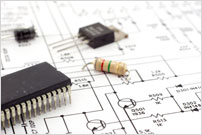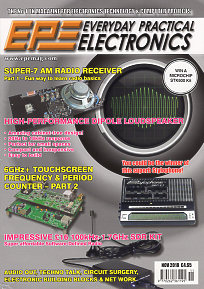November 2018 Issue
A summary of this month's contents.
Super-7 Transistor AM Radio Receiver (Part 1)
 Every electronics hobbyist should build a radio receiver at least once in their lives! This modern ‘take’ on an AM (Amplitude Modulation) superheterodyne receiver is a great way of experiencing the basics of radio reception and exploring principles that are nearly 100 years old and still relevant today.
Every electronics hobbyist should build a radio receiver at least once in their lives! This modern ‘take’ on an AM (Amplitude Modulation) superheterodyne receiver is a great way of experiencing the basics of radio reception and exploring principles that are nearly 100 years old and still relevant today.
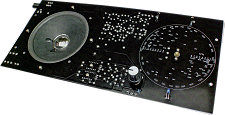 Our radio uses standard ‘discrete’ components – no surface mount technology needed here – in a classic seven-transistor design built on a single p.c.b. Traditional features include a volume control and speaker/ headphone jack, plus battery/ mains adapter operation.
Our radio uses standard ‘discrete’ components – no surface mount technology needed here – in a classic seven-transistor design built on a single p.c.b. Traditional features include a volume control and speaker/ headphone jack, plus battery/ mains adapter operation.
Part One outlines the principles of the superhet receiver along with the circuit diagram and parts list, with construction following next month. It’s a great way of dabbling with radio principles and experiencing the thrill of turning on a home-built radio receiver for the first time, so tune into this project now!
6GHz+ Touchscreen Frequency & Period Counter (Part 2)
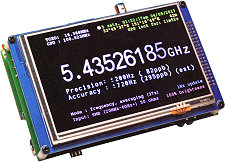
Last month we published the circuit diagram and operating principles behind this Micromite Plus Explore 100-based DFM and in Part Two this month we describe how to assemble and test the two p.c.b.s , then load the software. Final operation and usage are offered in the final part next month.
![]() Surface mount design needs good soldering skills
Surface mount design needs good soldering skills
High-performance Dipole Loudspeaker
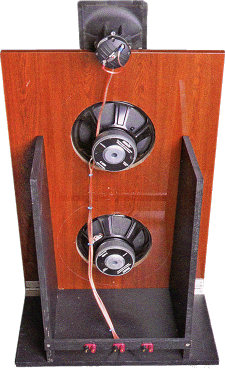 A loudspeaker without a cabinet might seem an impossible thing to create, but this open-baffle ‘dipole’ speaker is exactly that! It has no rear cabinet but offers remarkably flat response and no discernable bass roll-off in smaller rooms.
A loudspeaker without a cabinet might seem an impossible thing to create, but this open-baffle ‘dipole’ speaker is exactly that! It has no rear cabinet but offers remarkably flat response and no discernable bass roll-off in smaller rooms.
Apart from its high performance, all things considered, the open-baffle design brings constructors the added benefit of not requiring any special woodworking nor cabinet-making skills to fabricate a speaker 'enclosure'.
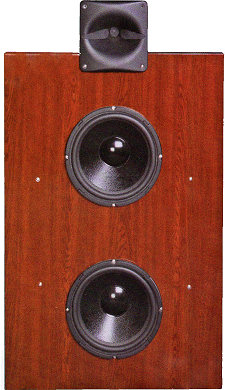 The design has a wide range frequency response from 20Hz to 18kHz.
The design has a wide range frequency response from 20Hz to 18kHz.
We also show how to hook up power amps and the 3-Way Active Crossover featured in the September and October 2018 issues of EPE.
Full drawings are included along wth plenty of practical advice to ensure you can build this interesting design with confidence.
A Build-it Yourself Software Defined Radio (SDR) Kit

Can it be true? A full SDR kit for just £16? Chinese vendor Banggood offers an SDR kit along with a DVB-T dongle which we explore in this special feature.
Kit-builders will have to strip apart the supplied dongle to couple it to the main kit’s board, but the devil is in the detail - you might need some extra help to make it workable as it involves some extremely fiddly SMD soldering. Our article shows the steps needed, along with better instructions and some close-up photos to help you build the kit successfully and run the software.
Dynamo Bicycle LED Lighting System
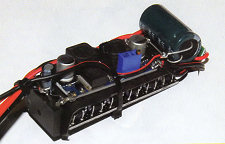
The traditional bicycle dynamo lighting system is given a 21st Century makeover by adding a few standard parts, a flashing tail light and the addition of a super-capacitor pack so the lights stay on when you cycle to a halt. A great project for experimenters, just in time for those longer winter evenings.
Audio Out (Part 4) - An analogue synthesizer

If you are into electronic sound creation then this mini-series is for you! This month, as we head towards the completion of a budget analogue synth. with stylus-operated ‘keyboard’, we continue our intensive exploration of analogue music synthesis with the design and construction of more synthesizer modules including a VCA and Sample and Hold board. The importance of using matching transistor pairs is also examined.
Electronic Building Blocks
- Buck/ Boost Module
This series uses ‘cheap as chips’ components bought online and adapts them into something useful. This month a buck/boost module is presented that will output 1.25V to 35V with a supply voltage anywhere from about 3 – 32V.
Also in this issue
- Techno Talk learns of a new energy storage system that could drastically reduce electric vehicle charging times. We lift the lid on the UK smart meter scandal.
- Lucy’s Lab our Maker creates a set of #Cheerlights LED boots
- Net Work – tracing the first ever example of free downloadable music
- Circuit Surgery – introduction to Circuit Simulation with LTSpice – Part 2 - LTSpice files are included in the monthly download zip file (top right).
Next month
Touchscreen Altimeter with colour LCD; Super-7 AM Radio Receiver (Part 2); 6GHz+ Touchscreen Frequency & Period Counter (Part 3); More low-cost modules.
Contents may be subject to change.
There’s more in EPE than ever before! EPE is packed with practical electronics projects and theory for the hobbyist. You can order a printed copy of EPE for delivery to your door (worldwide), or try the PDF Version (needs Adobe Reader for Windows), or the Pocketmags for your mobile device. Subscribe now!
Source code file 1118.zip
[Circuit Surgery LTSpice; Audio Out Eagle files; 6GHz+ Freq Counter files].
 Download Help
Download Help
Can't find what you're looking for? Our Library Help Page offers extensive information and help with downloading files.

The November 2008 issue included a simple variable-boost control for turbocharged cars; Fuel-cut defeat for cars with variable boost control; low-cost 50MHz Frequency Meter Mk2; 20W Class-A Amp (Part 2).
PCB artwork
As from July 2013 issue PCB artwork is available free to subscribers only.
Non-subscribers may purchase artwork files for a nominal sum. Please contact our Orders Dept for information or to place an order.
EPE Printed Circuit Boards
We can supply ready-made printed circuit boards (8-digit order codes) to the original design specification via mail order or from our Online Shop.

